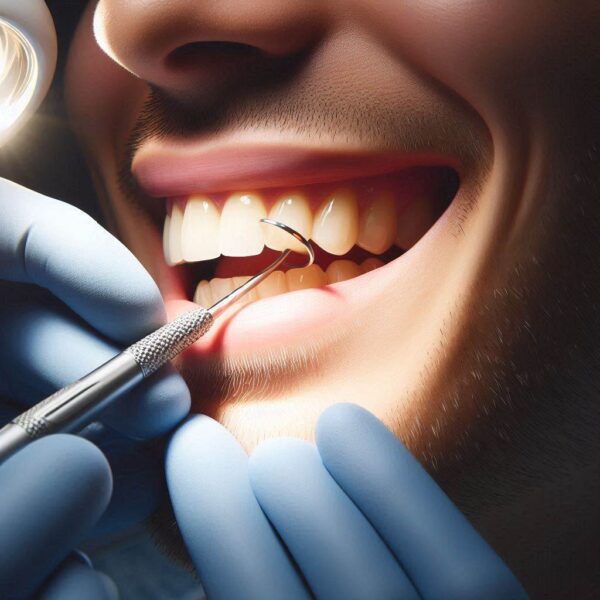
Tooth bonding is a cosmetic dental procedure that involves applying a tooth-colored resin material to the surface of the teeth to improve their appearance.
It is an effective and affordable solution for correcting minor dental imperfections such as chips, cracks, gaps, and discoloration.
Tooth bonding can enhance the overall aesthetics of your smile and boost your confidence. The procedure is relatively quick, minimally invasive, and typically completed in a single visit to the dentist.
What is Tooth Bonding?
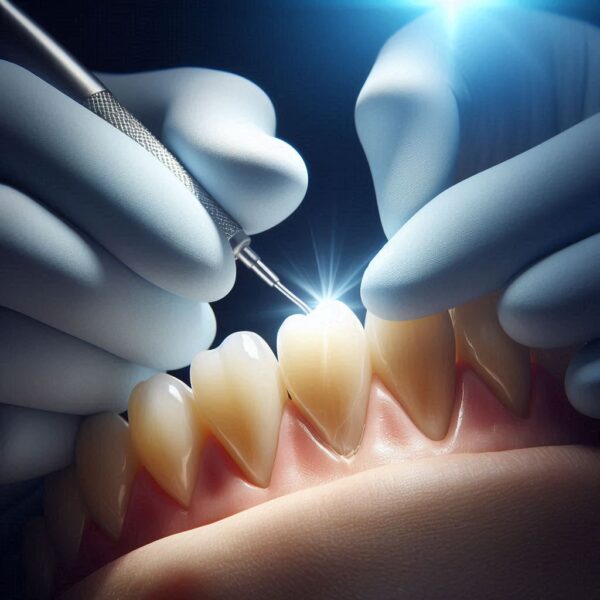
Tooth bonding involves the application of a composite resin material to the surface of the teeth. This resin is carefully selected to match the natural color of your teeth, ensuring a seamless and natural-looking result.
The bonding material is sculpted and molded to the desired shape before being hardened with a special light. The result is a restored tooth that looks and functions just like your natural teeth.
Benefits of Tooth Bonding
Aesthetic Improvement
Tooth bonding can significantly improve the appearance of your teeth by addressing issues such as chips, cracks, discoloration, and gaps. It can also be used to lengthen teeth or change their shape for a more uniform look.
Quick and Convenient
The bonding procedure is usually completed in one visit to the dentist, typically taking 30 to 60 minutes per tooth. This makes it a convenient option for those looking to enhance their smile without multiple appointments.
Minimally Invasive
Unlike other cosmetic procedures such as veneers or crowns, tooth bonding requires minimal removal of the tooth’s natural structure. This preserves more of your natural tooth and is generally a painless procedure.
Cost-Effective
Tooth bonding is one of the most affordable cosmetic dental treatments available, making it accessible for many patients looking to improve their smile.
The Tooth Bonding Procedure
Consultation
The process begins with a consultation where your dentist will examine your teeth, discuss your goals, and determine if bonding is the right solution for you.
Preparation
Little to no preparation is needed for tooth bonding. If necessary, the dentist will roughen the surface of the tooth and apply a conditioning liquid to help the bonding material adhere properly.
Application
The dentist will select a composite resin color that matches your natural teeth. The resin is then applied to the tooth, molded, and sculpted to the desired shape.
Curing
Once the resin is properly shaped, a special curing light is used to harden the material. This usually takes a few seconds to a minute.
Finishing Touches
After the resin has hardened, the dentist will trim, shape, and polish the bonded tooth to ensure it matches the sheen and contours of your natural teeth.
Aftercare Tips for Bonded Teeth
Maintain Good Oral Hygiene
Brush and floss regularly to keep your teeth and gums healthy. Bonded teeth require the same care as your natural teeth.
Avoid Staining Foods and Drinks
Limit consumption of coffee, tea, red wine, and tobacco to prevent staining the bonded resin, especially in the first 48 hours after the procedure.
Avoid Hard Foods
Biting hard foods or objects can chip the bonding material. Be mindful of what you eat to maintain the integrity of the bonded teeth.
Regular Dental Check-Ups
Visit your dentist regularly for check-ups and cleanings. They can monitor the condition of the bonded teeth and make any necessary adjustments or repairs.
Why Is Tooth Bonding Important
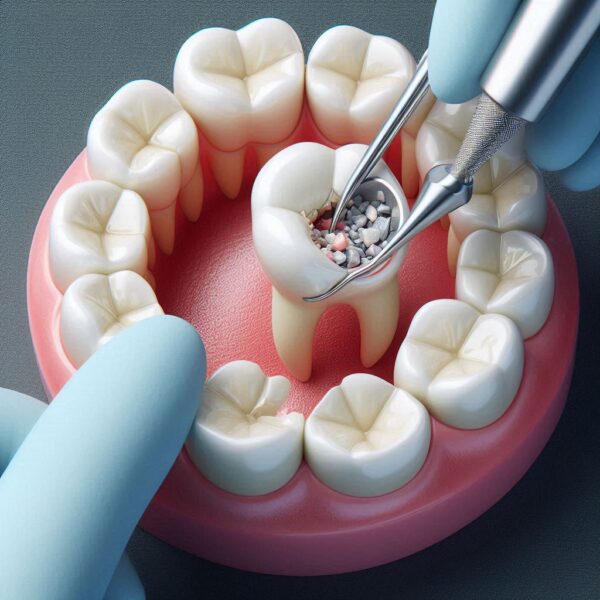
Importance of Tooth Bonding
Tooth bonding is an essential procedure in cosmetic dentistry due to its numerous benefits and versatility in addressing various dental issues. Here are some key reasons why tooth bonding is important:
1. Aesthetic Enhancement
Tooth bonding can significantly improve the appearance of teeth by addressing minor imperfections such as chips, cracks, discoloration, and gaps. It helps create a more uniform and attractive smile, boosting the patient’s confidence and self-esteem.
2. Cost-Effective Solution
Compared to other cosmetic dental procedures like veneers or crowns, tooth bonding is relatively inexpensive. This makes it an accessible option for many patients looking to enhance their smile without incurring high costs.
3. Minimally Invasive Procedure
Tooth bonding requires minimal removal of the natural tooth structure, preserving more of the tooth compared to other treatments. This makes the procedure less invasive and generally painless, reducing patient anxiety and discomfort.
4. Quick and Convenient
The tooth bonding procedure is typically completed in one visit to the dentist, often within 30 to 60 minutes per tooth. This convenience allows patients to achieve noticeable improvements in their smile without multiple appointments or lengthy treatments.
5. Versatility in Treatment
Tooth bonding is a versatile solution that can address a wide range of dental issues. It can be used to repair chipped or cracked teeth, close gaps between teeth, change the shape or length of teeth, and even protect exposed roots due to gum recession.
6. Preservation of Natural Tooth
Because tooth bonding involves minimal alteration to the natural tooth structure, it helps maintain the tooth’s integrity and strength. This is particularly important for patients who want to improve their smile without compromising the health of their natural teeth.
7. Immediate Results
Patients can see immediate improvements in the appearance of their teeth following the bonding procedure. This instant gratification is highly appealing to those seeking a quick solution to enhance their smile.
8. Enhances Oral Health
By repairing chips and cracks, tooth bonding helps prevent further damage and potential complications, such as decay or infection. It also strengthens the teeth and contributes to better overall oral health.
How Long Does Teeth Bonding Last?

Teeth bonding typically lasts between 3 to 10 years, depending on various factors, including the patient’s oral hygiene practices, the location of the bonding, and the material used. Here are some key factors that influence the longevity of teeth bonding:
Factors Affecting the Longevity of Teeth Bonding
Oral Hygiene Practices
Good oral hygiene is essential for prolonging the lifespan of bonded teeth. This includes brushing twice a day, flossing daily, and using an antimicrobial mouthwash. Regular visits to the dentist for cleanings and check-ups are also important to monitor the condition of the bonded teeth and address any issues early on.
Dietary Habits
Avoiding staining foods and drinks, such as coffee, tea, red wine, and tobacco, can help maintain the appearance of bonded teeth as these can discolor the bonding material over time. Additionally, avoiding hard and chewy foods, such as ice, nuts, or hard candy, is crucial because biting on hard objects can chip or break the bonding material.
Location of Bonding
The location of the bonding can affect its longevity. Bonding on front teeth may last longer since they are less involved in heavy chewing compared to back teeth, which experience more wear and tear.
Quality of Bonding Material and Procedure
The quality of the composite resin used for bonding can significantly affect its durability. Higher-quality materials tend to last longer. Additionally, the expertise of the dentist performing the bonding procedure is important. A well-done bonding procedure by an experienced dentist is likely to last longer.
Personal Habits
Habits such as teeth grinding (bruxism) or clenching can put excessive pressure on bonded teeth, causing them to wear down or break. Using a night guard can help protect bonded teeth if you grind your teeth at night. It’s also important to avoid using your teeth as tools to open packages or bite nails, as this can damage the bonding material.
Signs That Teeth Bonding Needs Replacement
Discoloration
Over time, the bonded area may become discolored, standing out from the rest of your teeth.
Chipping or Cracking
If the bonding material chips or cracks, it will need to be repaired or replaced.
Wear and Tear
General wear and tear can cause the bonding material to degrade, necessitating replacement.
By understanding these factors and taking appropriate care, patients can help ensure their bonded teeth last as long as possible, maintaining a healthy and attractive smile.
Do Bonded Teeth Hurt?

Teeth bonding is generally a painless procedure, but some patients may experience mild discomfort during or after the treatment. Here are some key aspects to consider regarding pain and discomfort related to bonded teeth:
During the Procedure
Minimal Invasiveness
Teeth bonding is a minimally invasive procedure that typically does not require anesthesia, especially if it is being performed to repair minor chips or cracks or to improve the appearance of a discolored tooth. The dentist applies a composite resin material to the tooth surface, shapes it, and then hardens it with a special light.
Sensitivity
Patients with sensitive teeth might experience slight discomfort during the bonding process, especially when the dentist applies the conditioning liquid used to help the resin adhere to the tooth. However, this discomfort is usually minimal and temporary.
After the Procedure
Sensitivity to Temperature
Some patients may experience increased sensitivity to hot or cold temperatures following the bonding procedure. This is usually temporary and should subside within a few days. Using toothpaste for sensitive teeth can help alleviate this discomfort.
Mild Discomfort
There might be slight discomfort or an unusual feeling in the bonded tooth as you get used to the new surface. This is typically mild and temporary. If discomfort persists, it is important to consult your dentist.
Rough or Uneven Edges
In some cases, the bonded tooth might feel rough or have uneven edges. If this occurs, you should contact your dentist to have the bonding smoothed or adjusted.
Managing Discomfort
Good Oral Hygiene
Maintaining good oral hygiene practices, such as regular brushing and flossing, can help prevent any complications and ensure the longevity of the bonded teeth.
Avoiding Hard Foods
Avoid biting on hard objects or foods, which can cause the bonding material to chip or crack, leading to discomfort.
Regular Dental Visits
Regular dental check-ups allow the dentist to monitor the condition of the bonded teeth and address any issues promptly.
When to Seek Help
Persistent Pain
If you experience persistent pain or discomfort in the bonded tooth, it is important to consult your dentist. Persistent pain could indicate an issue that needs to be addressed, such as an improperly applied bond or an underlying dental problem.
Signs of Damage
If you notice any chipping, cracking, or other signs of damage to the bonded tooth, contact your dentist for a repair or adjustment.
Difference Between Bonding and Filling Teeth

Tooth bonding and dental fillings are both common dental procedures, but they serve different purposes and are used in different situations. Here’s a comprehensive look at the differences between tooth bonding and dental fillings:
Purpose
Tooth Bonding
Tooth bonding is primarily a cosmetic procedure used to improve the appearance of teeth. It involves applying a tooth-colored composite resin to the surface of the teeth to correct minor imperfections such as chips, cracks, gaps, discoloration, and minor misalignments. Bonding can also be used to lengthen teeth or change their shape for aesthetic purposes.
Dental Fillings
Dental fillings are primarily used to restore teeth that have been damaged by decay (cavities). The procedure involves removing the decayed portion of the tooth and filling the cavity with a suitable material to restore the tooth’s function and integrity.
Fillings can also be used to repair cracked or broken teeth and teeth that have been worn down by misuse, such as from nail-biting or tooth-grinding.
Materials Used
Tooth Bonding
Bonding uses a tooth-colored composite resin that is carefully matched to the natural color of the patient’s teeth. The resin is applied in layers, shaped, and then hardened with a special light. After the resin has hardened, it is further shaped and polished to achieve the desired look and feel.
Dental Fillings
Fillings can be made from a variety of materials, including composite resin, amalgam, gold, and ceramic. Composite resin is a tooth-colored material that blends with the natural tooth. Amalgam is a durable, silver-colored material made from a mixture of metals, including silver, mercury, tin, and copper.
Gold is a highly durable and long-lasting material, though more expensive and noticeable. Ceramic is a tooth-colored material that is more resistant to staining compared to composite resin but can be more brittle.
Procedure
Tooth Bonding
Minimal preparation is needed for tooth bonding. The tooth surface may be roughened, and a conditioning liquid is applied to help the resin adhere. The composite resin is then applied to the tooth, molded, and shaped. A special light is used to harden the resin. Finally, the bonded tooth is shaped and polished to match the surrounding teeth.
Dental Fillings
The decayed portion of the tooth is removed, and the area is cleaned. The filling material is placed into the cavity in layers. If composite resin is used, each layer is hardened with a special light. The filling is then shaped and polished to ensure a proper fit and bite.
Durability and Longevity
Tooth Bonding
Bonding typically lasts between 3 to 10 years, depending on factors such as oral hygiene, dietary habits, and the location of the bonding. It is less durable than some other dental restorations and may need to be repaired or replaced over time.
Dental Fillings
The longevity of dental fillings depends on the material used. Amalgam fillings last about 10 to 15 years or longer. Composite fillings last about 5 to 7 years but can last longer with good care. Gold fillings can last 20 years or more. Ceramic fillings can last about 10 to 15 years.
Cost
Tooth Bonding
Bonding is generally less expensive than other cosmetic dental procedures like veneers or crowns. The cost can vary depending on the extent of the procedure and the dentist’s expertise.
Dental Fillings
The cost of dental fillings varies based on the material used and the size and location of the cavity. Amalgam fillings are typically less expensive than composite resin, gold, or ceramic fillings.
Are There Any Risks to Tooth Bonding?
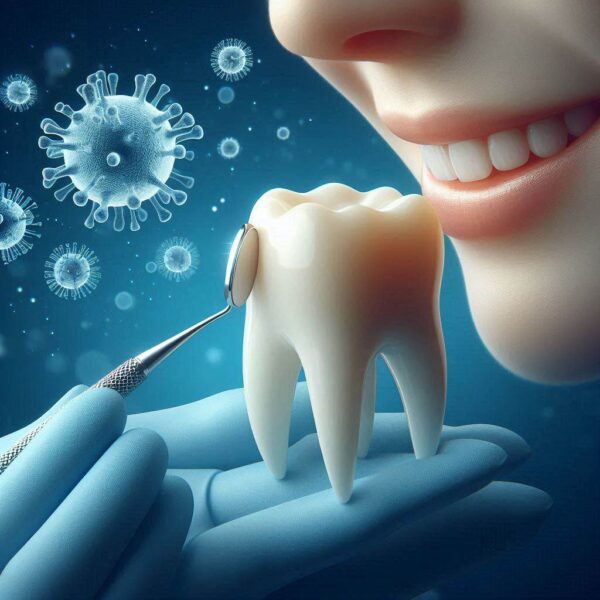
Tooth bonding is generally considered safe and effective, but like any dental procedure, it carries some risks and considerations. Here are the potential risks associated with tooth bonding:
Potential Risks
Sensitivity
After tooth bonding, some patients may experience temporary sensitivity to hot and cold temperatures. This sensitivity typically subsides within a few days as the tooth adjusts to the bonding material.
Discoloration
The bonding material used can stain over time, especially if the patient consumes staining substances like coffee, tea, or tobacco. Proper oral hygiene and regular dental cleanings can help minimize discoloration.
Chipping or Breakage
Although composite resin used in bonding is durable, it may chip or break under excessive force or pressure. Avoiding biting hard objects and habits like nail biting can help prevent damage to bonded teeth.
Allergic Reaction
While rare, some patients may experience an allergic reaction to the materials used in tooth bonding, such as the composite resin or bonding agents. Dentists typically perform an allergy test before applying the bonding material to mitigate this risk.
Longevity and Maintenance
Lifespan of Bonding
Bonding typically lasts between 3 to 10 years, depending on factors like oral hygiene, dietary habits, and the location of the bonding. Regular dental visits and good oral care can help extend the lifespan of bonded teeth.
Maintenance
Proper maintenance is essential to preserve the appearance and function of bonded teeth. This includes practicing good oral hygiene, avoiding habits that can damage the bonding material, and attending regular dental check-ups.
Consultation with a Dentist
Before undergoing tooth bonding, it is crucial to consult with a qualified dentist. They can assess your oral health, discuss the benefits and risks of bonding, and address any concerns you may have. Dentists with experience in cosmetic dentistry can also provide personalized recommendations based on your dental needs and goals.
How To Care For Bonded Teeth
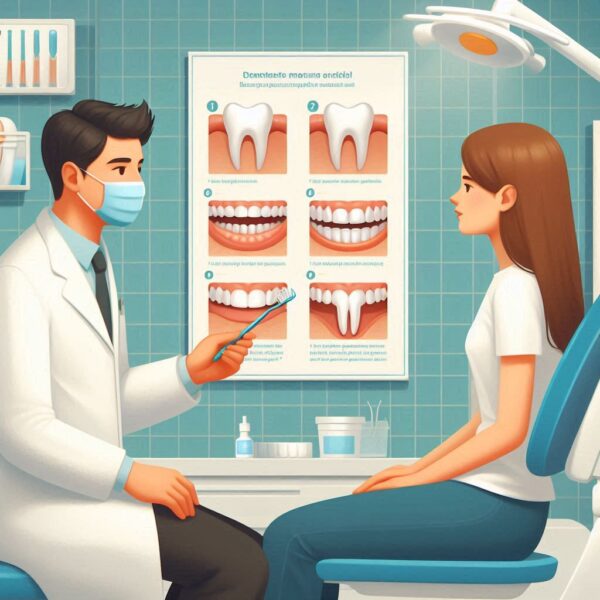
Proper care for bonded teeth is essential to maintain their appearance and longevity. Here are key tips on how to care for bonded teeth:
Daily Oral Hygiene
Brushing
Brush your teeth at least twice a day with a soft-bristled toothbrush and fluoride toothpaste. Brush gently around the bonded areas to remove plaque and food particles without putting excessive pressure on the bonding material.
Flossing
Floss daily to clean between teeth and around the bonded areas. Use a gentle, sliding motion to avoid pulling on the bonding material. Consider using waxed floss or floss designed for dental work to minimize potential catching on the edges of the bonding.
Dietary Considerations
Avoid Staining Foods and Drinks
Limit consumption of staining substances such as coffee, tea, red wine, and tobacco. These can cause discoloration of the bonding material over time. If consuming these substances, rinse your mouth with water afterwards or brush your teeth to minimize staining.
Avoid Hard and Sticky Foods
Avoid biting on hard objects, ice cubes, nuts, and hard candies that can potentially chip or break the bonding material. Similarly, sticky foods like caramel or chewing gum can adhere to the bonding and pull it off the tooth surface.
General Care Tips
Use Protective Mouthguards
If you grind your teeth at night or participate in contact sports, consider wearing a mouthguard to protect your bonded teeth from damage and wear.
Regular Dental Check-ups
Visit your dentist for regular check-ups and cleanings. Your dentist can monitor the condition of your bonded teeth, identify any potential issues early on, and professionally clean the bonded areas to maintain their appearance.
What to Avoid
Teeth Whitening Products
Avoid using over-the-counter teeth whitening products or treatments on bonded teeth without consulting your dentist. These products can affect the color of natural teeth differently than bonded areas, resulting in uneven coloration.
Dental Tools
Do not use your bonded teeth as tools to open packages or bite on objects. This can chip or break the bonding material and compromise the integrity of the restoration.
Is Tooth Bonding Affordable?

Affordability of Tooth Bonding
Tooth bonding is generally considered an affordable cosmetic dental procedure compared to alternatives like veneers or crowns. Here are factors influencing the affordability of tooth bonding:
Cost Considerations
Lower Cost
Tooth bonding is typically less expensive than other cosmetic treatments because it requires less preparation and can often be done in a single dental visit. The cost varies depending on factors such as:
- Location: Dental fees can vary based on geographical location and the cost of living in the area.
- Dentist’s Expertise: Fees may differ based on the experience and skill level of the dentist performing the procedure.
- Extent of Treatment: The number of teeth treated and the complexity of the bonding procedure can influence the overall cost.
Insurance Coverage
In some cases, dental insurance may cover a portion of the cost of tooth bonding, especially if it is performed for structural reasons rather than purely cosmetic purposes. However, coverage policies vary widely, so it’s essential to check with your insurance provider to understand what is covered under your plan.
Longevity and Value
Duration of Results
While tooth bonding may be less expensive upfront compared to other cosmetic options, such as veneers or crowns, it typically lasts between 3 to 10 years. Proper care and maintenance can help extend the lifespan of bonded teeth, providing long-term value for the investment.
Consultation and Estimates
Dental Consultation
Before undergoing tooth bonding, schedule a consultation with a qualified dentist. They can assess your dental needs, discuss treatment options, and provide a cost estimate based on your specific situation.
Payment Plans
Some dental offices offer payment plans or financing options to help patients manage the cost of dental treatments, including tooth bonding. Discuss these options with your dentist or their office staff to find a solution that fits your budget.
What Are The Disadvantages Of Dental Bonding?
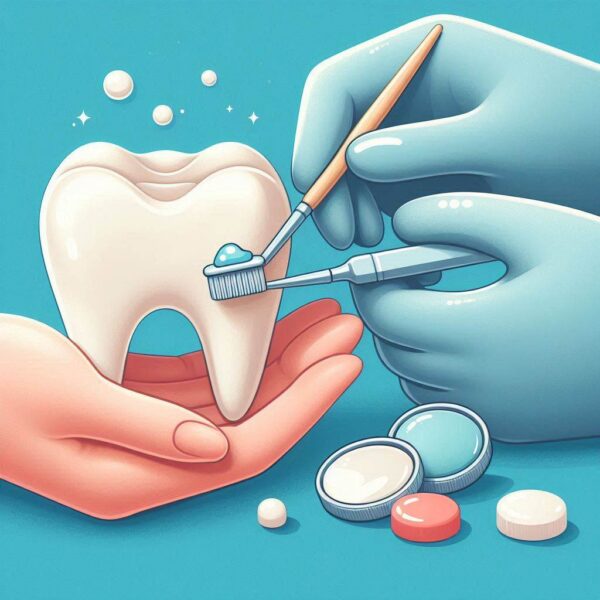
While dental bonding is a popular and effective cosmetic dental procedure, it does have some disadvantages and limitations to consider:
Potential Disadvantages
Durability
Bonding material is not as strong or durable as other dental restorations like crowns or veneers. It may chip or break over time, especially if exposed to excessive force or biting hard objects.
Staining
The bonding material can absorb stains from substances like coffee, tea, red wine, and tobacco. Regular consumption of these items can cause the bonding to become discolored over time, requiring periodic replacement or repair.
Longevity
Bonding typically lasts between 3 to 10 years, depending on factors such as oral hygiene, dietary habits, and the location of the bonding. It may need to be repaired or replaced periodically to maintain its appearance and function.
Maintenance
Bonded teeth require regular maintenance and care to prevent damage and maintain their aesthetic appeal. This includes practicing good oral hygiene, avoiding habits like nail biting or using teeth as tools, and attending regular dental check-ups.
Limited Applications
While effective for minor cosmetic enhancements and repairs, bonding may not be suitable for extensive dental restorations or cases requiring significant structural changes. In such cases, alternatives like crowns or veneers may be more appropriate.
Considerations
Cost
While generally more affordable than alternatives like crowns or veneers, the cost of dental bonding can vary depending on factors such as the number of teeth treated and the complexity of the procedure. Insurance coverage may also influence affordability.
Consultation with a Dentist
Before undergoing dental bonding, it’s important to consult with a qualified dentist. They can evaluate your oral health, discuss the benefits and limitations of bonding, and help determine if it’s the right treatment option for achieving your desired smile improvements.
Conclusion
Dental bonding is a valuable cosmetic dental procedure that can effectively enhance the appearance of teeth affected by minor imperfections. It offers immediate results with minimal discomfort and is generally more affordable than alternatives like crowns or veneers.
However, it’s important to consider potential disadvantages such as durability, staining, and maintenance requirements. Regular dental care and good oral hygiene practices are essential to prolong the lifespan of bonded teeth and maintain their aesthetic appeal over time.
Consulting with a qualified dentist can help determine if dental bonding is the right choice for achieving your desired smile improvements.
FAQs
Q1: How long does dental bonding last?
A1: Dental bonding typically lasts between 3 to 10 years, depending on factors such as oral hygiene, dietary habits, and the location of the bonding. With proper care and regular dental check-ups, the lifespan of bonded teeth can be extended.
Q2: Is dental bonding painful?
A2: Dental bonding is generally a painless procedure. Minimal preparation is required, and anesthesia is often unnecessary unless bonding is being used to fill a cavity. Some patients may experience temporary sensitivity after the procedure, which usually subsides quickly.
Q3: Can dental bonding be used to fix gaps between teeth?
A3: Yes, dental bonding can be used to close small gaps between teeth. The composite resin material is applied to the teeth and shaped to fill in gaps, providing a more uniform appearance.
Q4: Will dental bonding affect eating or chewing?
A4: Dental bonding should not significantly affect eating or chewing once the bonding material has fully hardened. It is important to avoid biting on hard objects or sticky foods to prevent damage to the bonding material.
Q5: How can I maintain bonded teeth?
A5: Maintain bonded teeth by practicing good oral hygiene, including brushing twice a day with fluoride toothpaste and flossing daily. Avoid habits like biting fingernails or using teeth as tools, and attend regular dental check-ups for professional cleanings and monitoring of bonded teeth.
